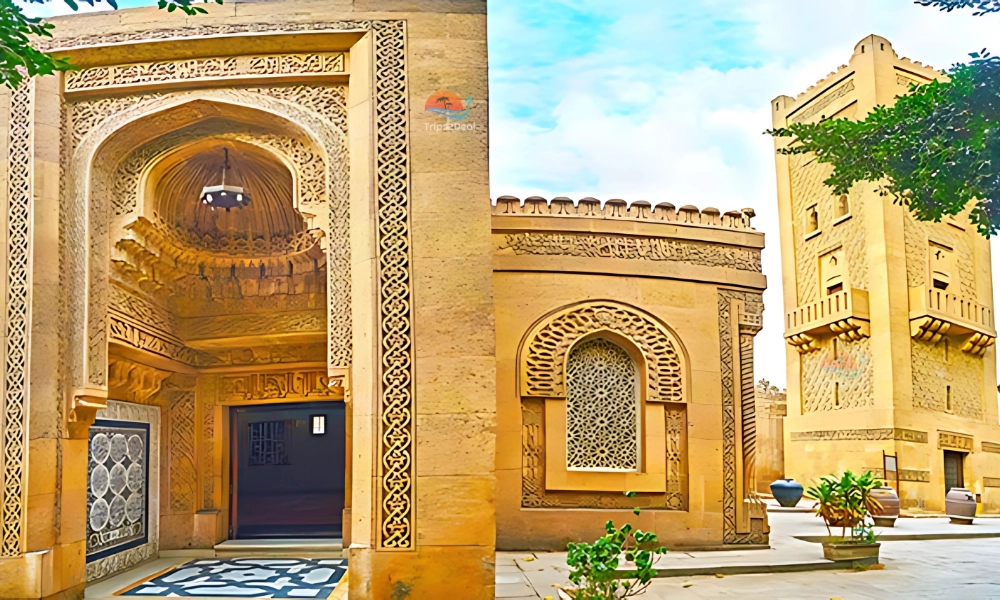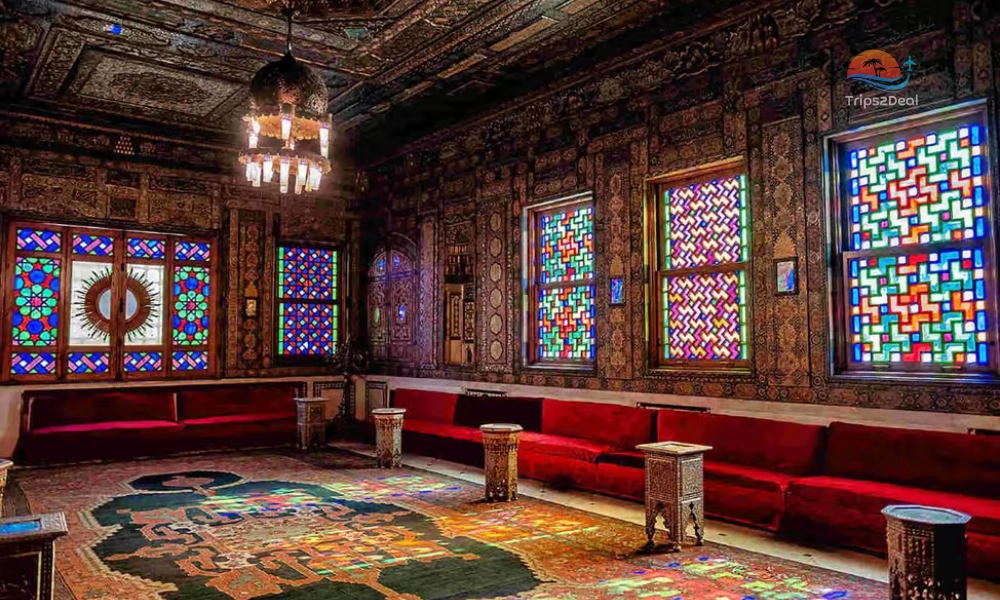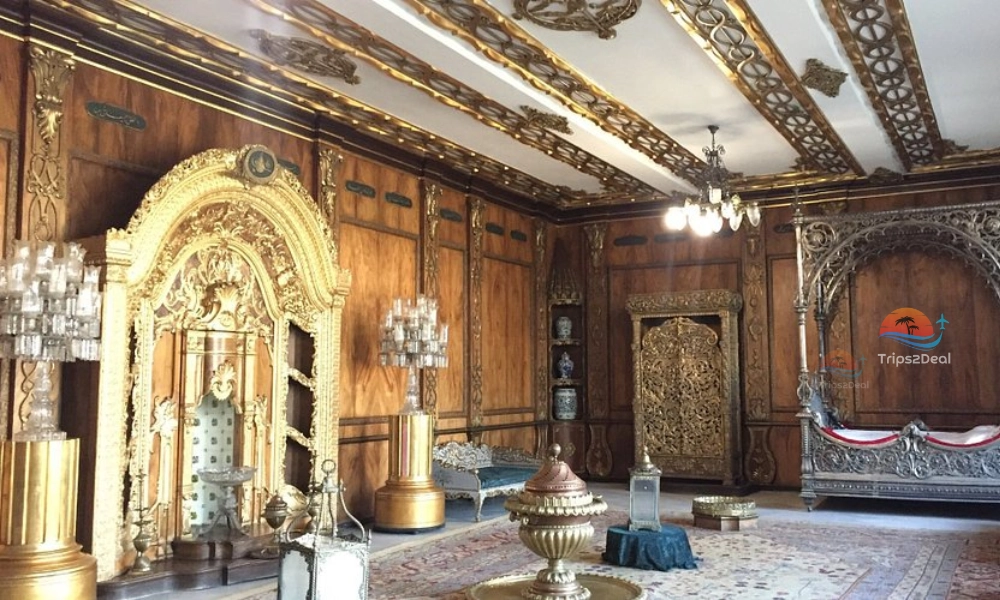Blogs

Mohemed Ali Manial Palace
Located on Rhoda Island in Cairo, meet the most iconic Cairo landmarks and the symbolic masterpiece of Islamic architecture in Egypt: the Mohemed Ali Manial Palace. This Palace was constructed in the reign of Prince Mohamed Ali Tewfik between 1899 and 1929, representing the royal grandeur with the influence of Ottoman, Persian, Moorish, and Rococo styles. But, nowadays, the Manial Palace Museum has become the most visited spot because of its real essence of Egypt’s rich history and architectural legacy. In this article, a comprehensive guide has been compiled about the historical background, significance, and transformations uptill now of Manial Palace.
Table of Contents
Why the Mohemed Ali Manial Palace has Strong Significance in Egyptian History
Get to Know the History of Manial Palace:
How Architectural Arts and Legacy Look:
The Significant Role of the Mohemed Ali Manial Palace:
Transformation into the Manial Palace Museum:
Wrapping Up: Plan Your Next Journey in Ali Mohamed Manial Palace
Why the Mohemed Ali Manial Palace has Strong Significance in Egyptian History
Manial Palace gains a huge popularity because of its strong and iconic Cairo royal architecture sites:
- A symbol of Egyptian royal heritage, showcasing the elegance of the Mohemed Ali dynasty.
- A fusion of Eastern and Western art, making it a masterpiece of Islamic architecture in Egypt.
- A repository of rare manuscripts, textiles, and art, offering a window into Egypt’s cultural treasures.
This palace isn’t a spot of visit only, but a living museum that depicts the blend of Egyptian royals’ art, architecture, design, and diplomacy of the 20th century.
Get to Know the History of Manial Palace:
Prince Mohemed Ali Tewfik, in the era of 1875-1955, built the palace over 30 years between 1899-1929, where history begins. He named the palace after his name as the Mohemed Ali Manial Palace:
- A private royal residence and retreat away from central Cairo.
- A monument to Islamic art, reviving and preserving traditional styles.
- A diplomatic venue, where foreign dignitaries and Egyptian elites gathered.
The true reflection of the prince's travels through Europe and the Middle East appears in every hall, garden, and courtyard design as the Egyptian Royal Heritage.

How Architectural Arts and Legacy Look:
The style, arts, and architecture of the Mohemed Ali Manial Palace are a remarkable symbol of Cairo's Royal Architecture. Many eras' cultural legacy is found in this Palace, as:
- Ottoman and Mamluk styles in courtyards, arches, and domes.
- Persian and Moroccan elements in tilework and landscaping.
- Moorish and Andalusian influences in ceilings and wall carvings.
- European Rococo and Art Nouveau details, adding gilded walls, stained glass, and carved woodwork.
You'll find an artistic beauty inside the Palace, like painted ceilings, marble floors, ornate wooden panels, colorful ceramic tiles, and mother-of-pearl inlays, enhancing the historic structure of Cairo. On the other hand, the exterior design includes Persian-inspired gardens that house exotic plants and fountains, making this Manial Palace one of the remarkable Cairo landmarks.
Internal Building and Rooms :
The infrastructure of the Manial Palace Museum is wide and complex. It has been divided into many buildings and rooms, an eye-catching depiction of Egyptian royal heritage:
- Reception Palace: Used for hosting dignitaries and official ceremonies.
- Throne Room (Golden Hall): A dazzling space with gilded decoration, palm-carved columns, and intricate Islamic motifs.
- Palace Mosque: Featuring Ottoman domes, Iznik tiles, glass-covered ceilings, and a gilded wooden minbar.
- Clock Tower: Built in a Moorish–Andalusian style with unique Kufic inscriptions.
- Hunting Museum: Housing over 1,000 taxidermied animals, hunting weapons, and royal trophies.
Every single spot of the museum is a classical brilliance and excellent significance of Cairo royal architecture, during the Mohamed Ali era.

The Significant Role of the Mohemed Ali Manial Palace:
The Mohemed Ali Manial Palace served its duties during Egypt’s Monarchy:
- A private retreat for Prince Mohamed Ali Tewfik, reflecting his refined tastes.
- A diplomatic hub, welcoming ministers, foreign leaders, writers, and artists.
- A guardian of Egyptian royal heritage, housing manuscripts, antique furniture, carpets, and textiles.
This Manial Palace has become a top-class traditional and political hub, representing the blended essence of Manial Palace Legacy and Cairo royal infrastructure.
Transformation into the Manial Palace Museum:
After Prince Mohemed Ali died in 1955, the palace and its collections were donated to the Egyptian government. It was transformed into the Manial Palace Museum, ensuring:
- Preservation of priceless collections, including manuscripts, royal garments, silverware, and portraits.
- Restoration of original Islamic architecture in Egypt to maintain its authenticity.
- Public access to one of the most significant Cairo landmarks.
The Manial Palace Museum today continues to tell the story of Egypt’s royal past while showcasing its artistic treasures.
The Palace Today
The Mohemed Ali Manial Palace Museum is now one of the best palaces in Egypt to visit, offering:
- Guided tours in Arabic and English, covering its gardens and historic halls.
- Cultural events and exhibitions, celebrating Egyptian art and history.
- Film and photography opportunities, particularly in the famous Golden Hall and gardens.
For visitors, the palace offers a unique blend of Cairo landmarks, Egyptian royal heritage, and Islamic architecture in Egypt, all in one destination.

Practical Visitor Guide:
Planning to visit the Manial Palace in Cairo? Here’s what you need to know:
- Opening Hours: Daily, 9:00 AM – 5:00 PM.
- Tickets ( Buy Tickets ):
- Egyptians: ~EGP 20 (adults), ~EGP 5 (students).
- Foreigners: ~EGP 220 (adults), ~EGP 110 (students).
- Free entry for children under 6 and seniors.
- Location: Rhoda Island, near Sayyida Zeinab Metro Station.
- Tips:
- Visit in the morning to enjoy a peaceful experience.
- Photography is allowed on mobiles, but no flash or video without a permit.
- Dress modestly and respect the palace’s heritage.
Wrapping Up: Plan Your Next Journey in Ali Mohamed Manial Palace
Whether you’re a student, visitor, history-finder, or traveller, embellish your memories by spending time at the Mohemed Ali Manial Palace, as it is full of timeless icons of Egypt's royal heritage. This is considered the most visited destination, as it is designed with the most Islamic-European art, lush gardens, and precious collections. Visitors celebrate the richness of the multi-cultural architecture of Egypt's royal architecture and make an unforgettable spot a memory.




